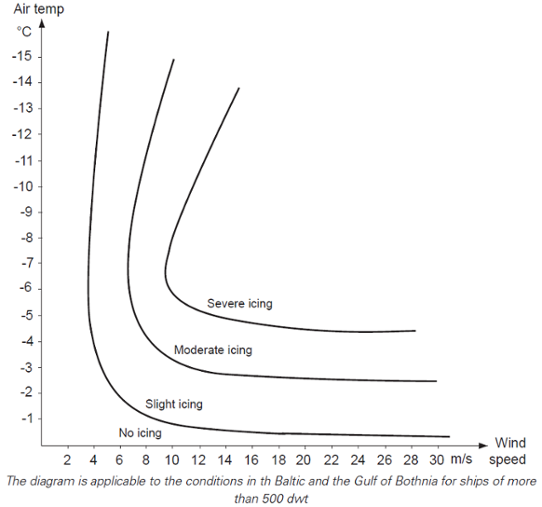The ice that forms can increase the weight of a ship by hundreds of tons. As the ice grows, the ship’s centre of gravity may be raised, making it catastrophically unstable. As well as affecting the ship’s weight, this shield of ice makes it more difficult to steer the ship, and may even lead to equipment failure.
The captain of a ship trafficking the Baltic during winter must always be prepared for ice accretion during rough weather. If the weather is such that there is a risk of ice accretion, then smaller ships should slow down, and turn to travel downwind, or travel close to land to seek immediate shelter. Ships in harbour should remain there until the weather has improved.
The following diagram shows the relationship between the severity of ice accretion, the wind speed and the air temperature. Other factors that affect ice accretion are the speed and direction of the ship (in relation to the wind and sea), wave height, sea surface temperature and water salinity.

On Mondays and Thursdays SMHI produces a sea surface temperature map that can be found on Ice and Sea surface temperature chart. This map shows where there could be a risk of ice accretion, by showing where the sea surface temperature has dropped below 4 degrees. During the ice season the map also shows the ice extent.
Ice accretion warnings
SMHI issues warnings for ice accretion if the ice growth on a vessel at sea is calculated to be more than 1 cm in 4 hours – usually in connection with gale and storm warnings.
Ice accretion is classified as moderate or severe according to the following table:
| Ice accretion warning | |
|---|---|
| Moderate | Growth rate = 1-3 cm in 4 hours (SMHI issues a warning for risk of moderate icing) |
| Severe | Growth rate > 4 cm in 4 hours (SMHI issues a warning for risk of severe icing) |
